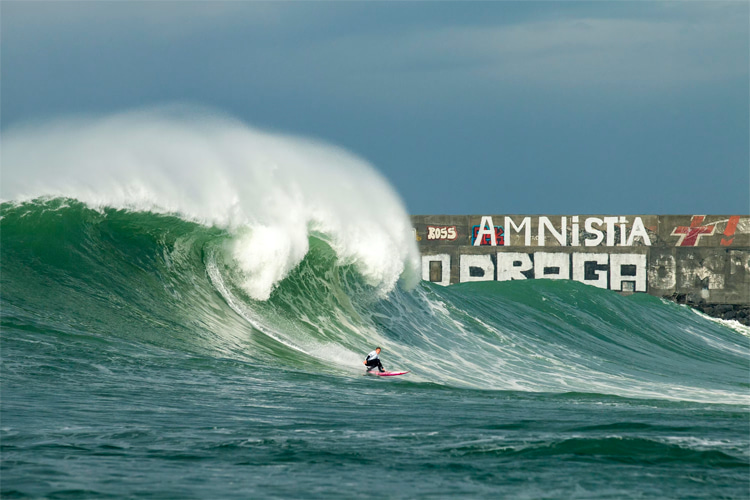Punta Galea is an iconic big wave point break located in the river mouth of River Nervión in Getxo, Basque Country, Spain.
Except for Nazaré's Praia do Norte, European big wave surfing arenas are typically underrated and rarely compared in height and danger to other heavy water spots.
The truth is that Ireland, the United Kingdom, France, and Spain are in the direct path of the infamous North Atlantic winter swells.
And when the cold season arrives, the buoys deployed in their coastal areas record historical wave heights and swell periods.
During winter, the northern shores of Spain, including Galicia, Asturias, Cantabria, and the Basque Country, get invaded by heavy rain, low temperatures, and brutal groundswells.
So, it is no surprise that Punta Galea is home to the longest-running big wave invitational in the Old Continent.
Breaking just nine miles (15 kilometers) northwest of Bilbao's city center, La Galea, as it is also known locally, is a world-class big wave surf zone just 90 miles west of another giant - Belharra.
Interestingly, it was almost destroyed in the 1970s by an engineering project planned for the Estuary of Bilbao.
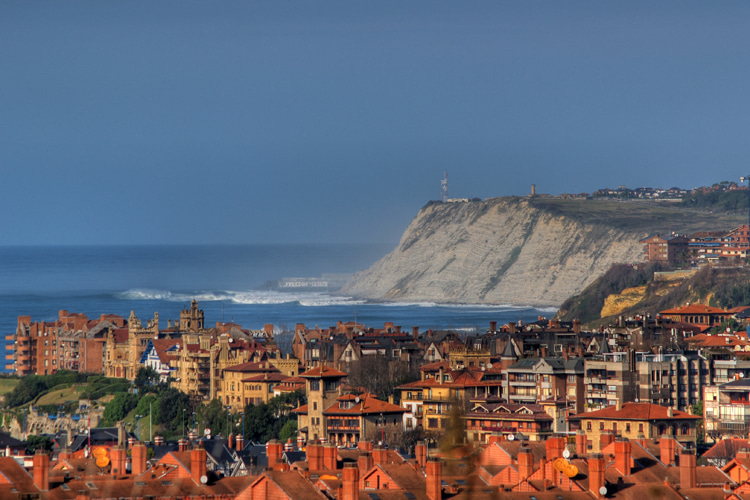
The Tragic Natural Event that Saved Punta Galea Surfing
In the mid-1960s, the local port had reached its maximum capacity, and there was pressure to expand it to welcome large oil takers.
In 1975, the 1.5-mile (2.45 kilometers) long Punta Lucer dike was built, and another one was ready for construction at Punta Galea.
It was supposed to be two miles (3.3 kilometers) long, and a road was created to carry the enormous concrete blocks.
Just as the structure was about to be finished in early December 1976, a powerful storm sent XXL waves and nuclear winds toward the Cantabrian coastline.
A series of 40-65-foot (12-20 meters) waves hit the Punta Lucero dike for 60 hours, causing huge holes and severe damage to the barrier.
The engineers were not expecting these unusual extreme weather events.
However, the tragic natural phenomenon killed two workers in a car that was swept away by the waves during an inspection.
Also, 90-mile-per-hour (145 kilometers per hour) winds, along with mighty waves, broke the moorings of several ships, including an oil tanker that was transferring its cargo at the time.
A small, controlled oil leak followed the human tragedy, but the project's reputation was severely damaged beyond repair.
The only thing that could be done was to repair the Punta Lucero dike using blocks and personnel destined for Punta Galea.
Later, a study concluded that the concrete blocks used were too small and had to be reinforced with larger, more resistant 150-ton rocks.
The construction works at Punta Galea were suspended, and the legendary waves prevailed and survived.
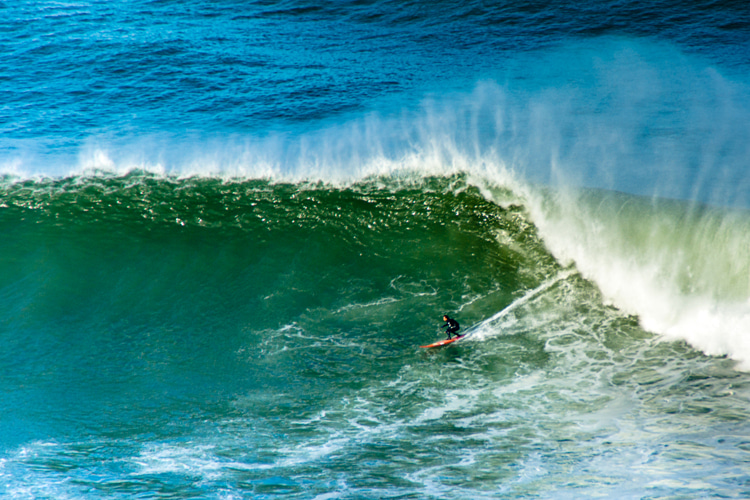
A Tricky Right-Hand Monster Wave
Everything in Punta Galea is a tricky challenge.
The entrance is extremely dangerous, and it is common for big wave riders to be caught by several wave sets.
But just as you might think you will not be able to enter and turn around, you may quickly get to the peak with your hair still dry.
The Spanish wave breaks in front of a picturesque 195-foot (60 meters) cliff on the right-hand side of the Bilbao Abra Bay, just opposite the harbor.
The safest way to reach the line-up is by a three-mile boat or jet ski ride via Puerto Deportivo de Getxo.
Punta Galea is known for having powerful and dangerous waves breaking on a slab of razor-sharp rocks on the base of the nearby cliff.
The zone is also known for some of the strongest currents in the world.
There are two main take-off sweet spots, and the playing field is large, so it's always tricky and nerve-wracking.
But if you find a comfortable area that works for you, the renowned right-hand point/jetty break offers long carving walls and occasional barrel sections.
The cliffs of Punta Galea provide the ideal stands for thousands of spectators who rarely miss the show as wave lines travel in from out in the horizon.
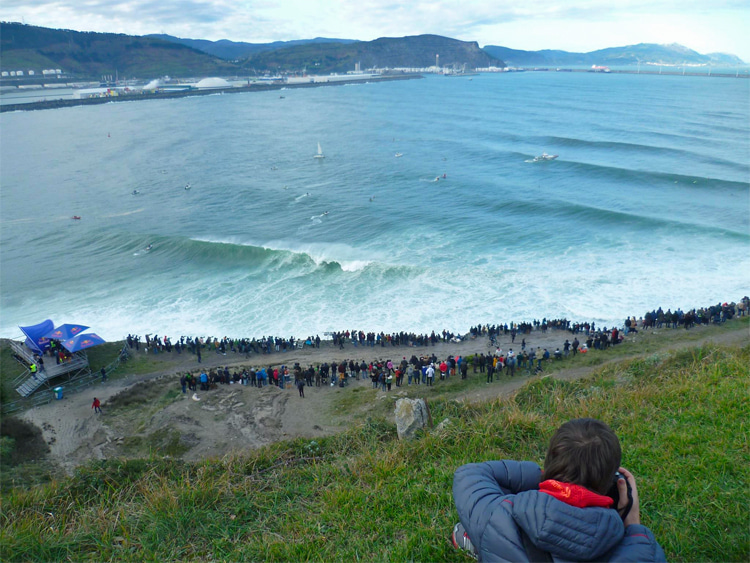
Mind the Rocks
La Galea is a wave of consequence.
On big days, water safety teams are always extremely busy all day with the wipeouts, injuries, and numerous snapped leashes that put surfers in hazardous situations.
Often, wave riders must be towed and rescued from particularly dangerous inside rocky sections.
Punta Galea can be incredibly scary, with massive sets rolling below dark grey rainy skies. Therefore, commitment is key to success.
Many boards have been lost to the rocks, and many surfers had to duck dive giant white water avalanches.
La Galea needs a powerful lined-up ground swell, so it only works well a few times a year. It is often uncrowded and prefers southern winds.
On a good day, you can catch a 20-to-30-foot wave near the river mouth and ride it along the point for a long distance.
The Punta Galea Challenge is an annual invitational-only big wave surfing event that welcomes the world's finest performers.
In the past, it was one of the few Big Wave World Tour venues held in the Northern Hemisphere.
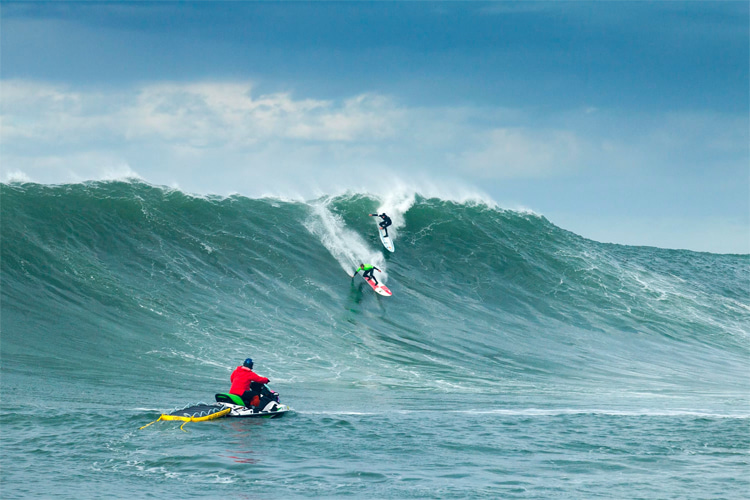
Punta Galea, Bilbao, Spain | ID and X-Ray
Location: Getxo, Basque Country
Type of Wave: Right-Hand Point/Jetty Break
Length: Up to 110 yards (100 meters)
Best Swell Direction: NW
Best Wave Size: 20-30 feet
Best Wind Direction: S, SE, E
Best Tide: High Tide
Best Time to Surf: Winter (December-March)
Skill Level: Advanced to Professional
Best Board: Bodyboard, Shortboard, Tow, and Gun
Crowd: Mostly Uncrowded
Water Quality: Fair
Hazards: Rocks, Rips
Bottom: Sand and Rock
Water Temperature: 46-75 °F (9-24 °C)
Getting There: Jet Ski, Paddle
